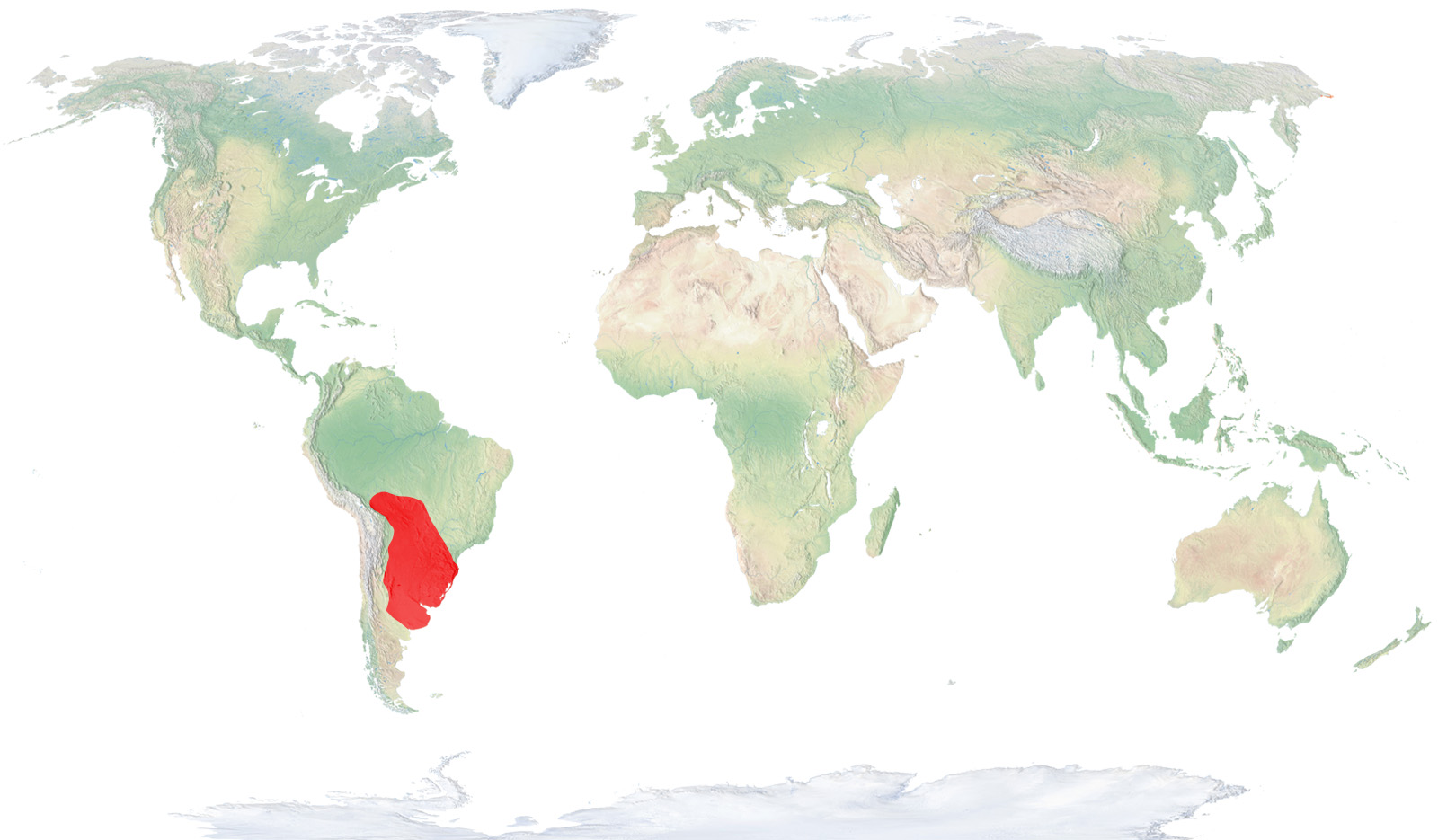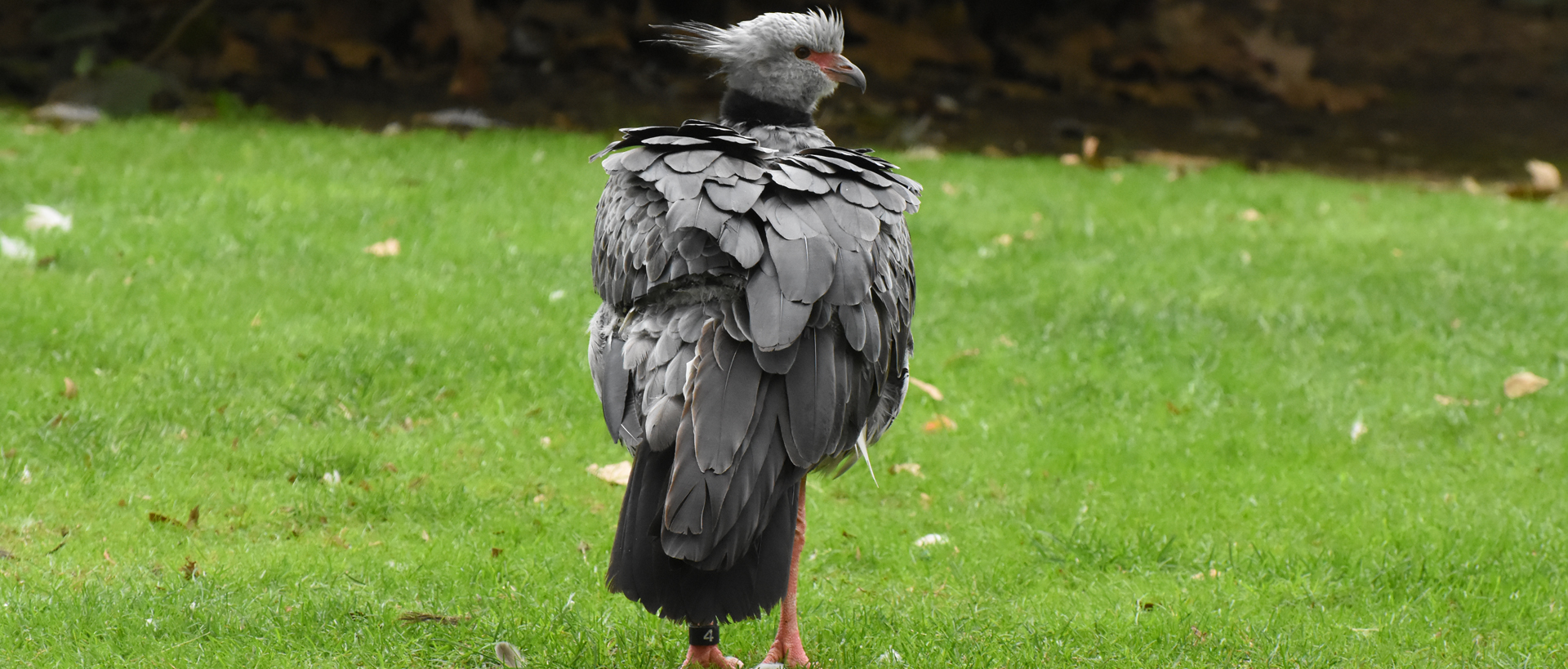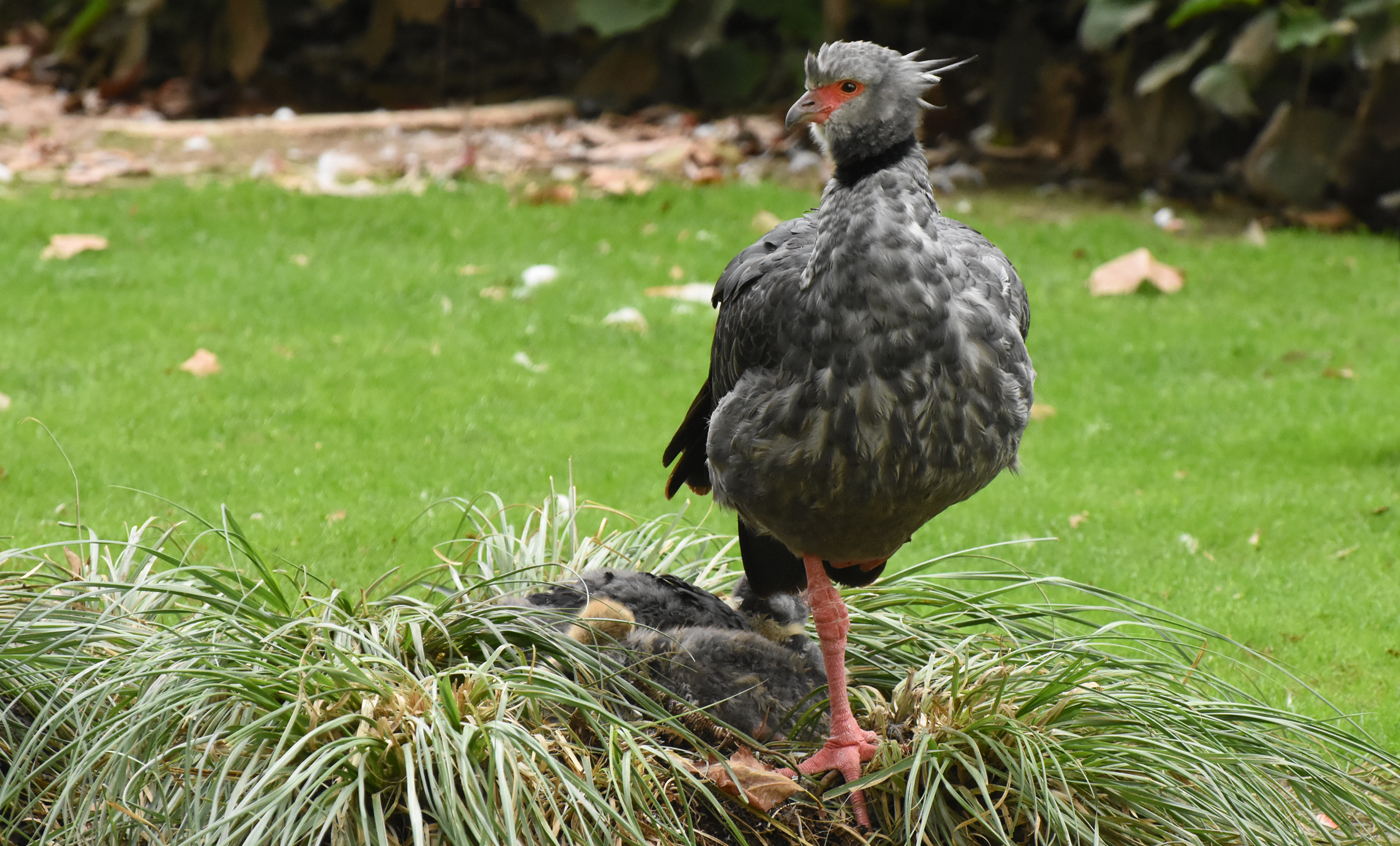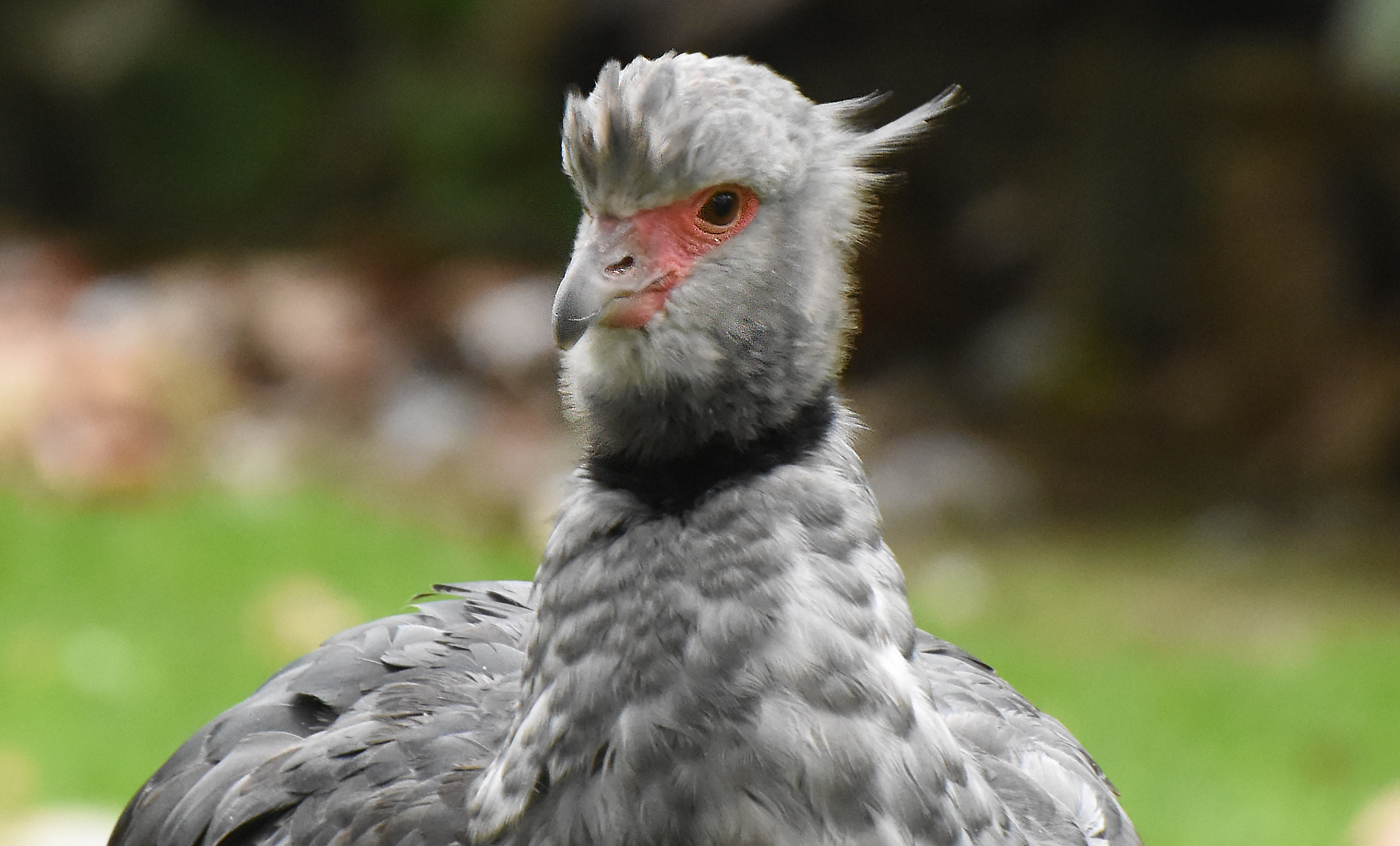Crested screamer
Although it does not look like one, the Crested screamer belongs to the order of Anseriformes, that means it is related to ducks and geese. It is a large bird, reaching up to 90 cms in height and weighing from 2 to 5 kilos. It has curved, pointed spurs up to 5 cms long on the wings, which it uses to defend itself.
Due to its aggressiveness and loud voice, it is often used like a guard dog in many parts of South America.
Natural habit
Central and south South America, from northeast Argentina, Uruguay and Paraguay to Brazil, Peru and Bolivia

- Distribution / Resident
- Breeding
- Wintering
- Subspecies
Risk level
- Extint
- Extint in the wild
- Critically endangered
- In Danger
- Vulnerable
- Near threatened
- Minor concern
- Insufficient data
- Not evaluated
Taxonomy
Physical characteristics
Biology
Reproduction
Biology
The crested screamer is the most common of the three living species of Anhimidae, a family that belongs to the order of Anseriformes—although it doesn’t look like it—just like ducks and geese. It is a stout bird with strong, long legs. The presence of two curved pointy spurs on the front edge of the wing, up to 5 cm long, used as a defensive weapon. However, what most clearly separates the Anhimidae from the rest of the Anseriformes is the shape of the beak, short and curved, very different from a duck’s beak and closely resembling those of rapacious birds. The name screamer pays homage to their powerful cry, audible from great distances
Their area of distribution covers the central part of South America (Bolivia, Paraguay, southern Brazil and northern Argentina), preferring wetlands, but also occupying the open pampas.
Their diet is largely vegetarian, although they also eat insects and other small animals.
The breeding season starts in the austral spring, although there is some variability and the length of the breeding calendar can vary significantly depending on the latitude. During the year, these birds form into small groups, although during the reproduction period, they break into pairs. The nest is voluminous, sometimes made over the water, but normally on the shores of lagoons and streams. They lay from two to seven eggs, although most commonly three to five, which are incubated for 42 to 46 days by both of the pair, with the male generally doing the task in the daytime.
It is sedentary and non-migratory around its distribution area. They may move in large groups in winter months, but always only short distances, searching for food.
It is not currently endangered, although it does face pressure from humans due to competing with domestic species for food resources, the destruction of croplands and the desiccation of water sources throughout the territory. It has been tamed in some parts of South America.





